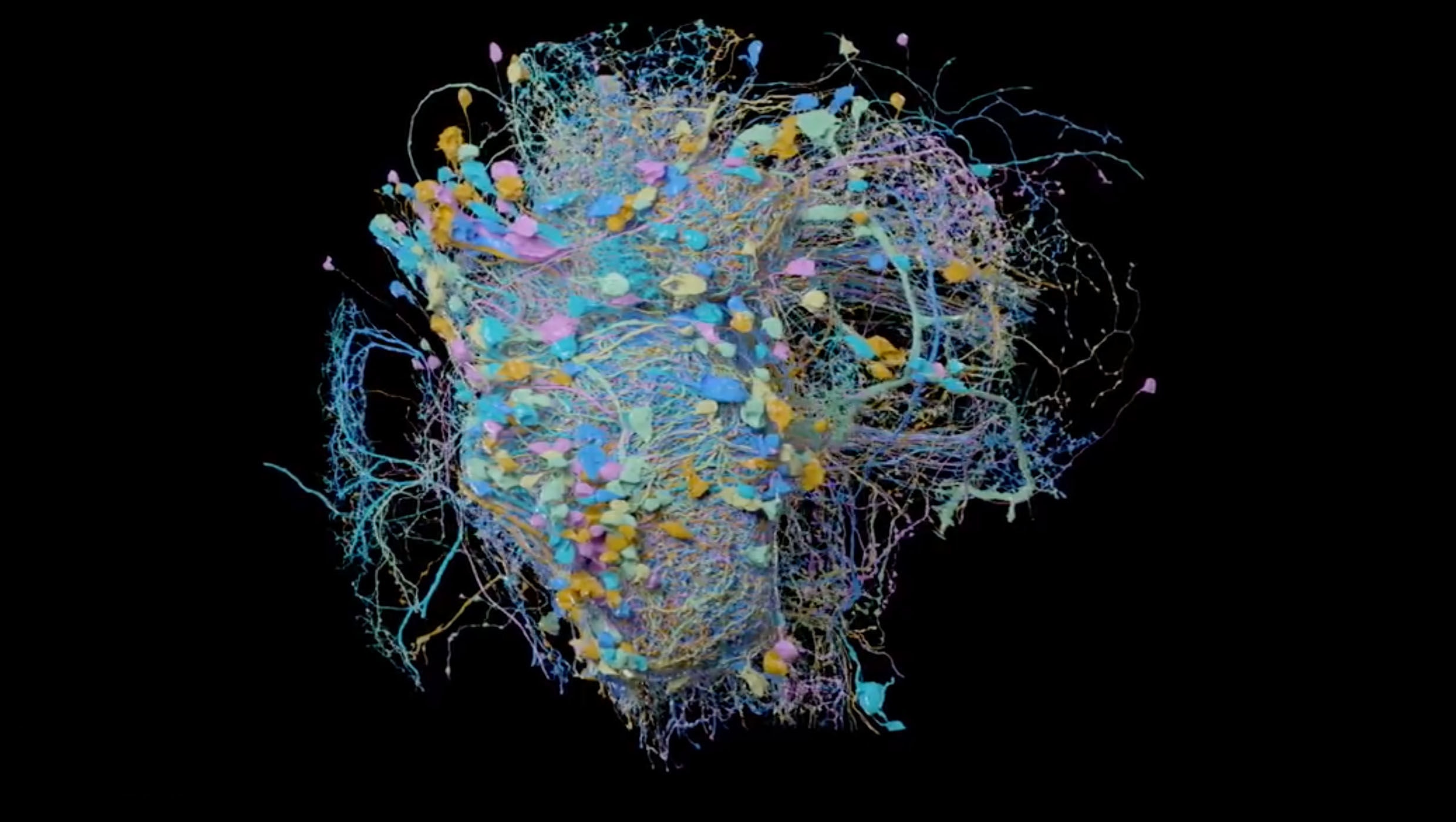Create a free profile to get unlimited access to exclusive videos, sweepstakes, and more!
This mind-blowing 3D image of a fly’s brain will make your eyes bug out

Ever wonder what Jeff Goldblum’s brain looked like when he turned into human-fly hybrid Brundlefly in The Fly? We may never know that, but at least we’ve got insight into the fly part.
Neural circuits that determine behavior are still a mystery to scientists. For the first time ever, scientists have mapped all the neurons in the brain of an animal whose behavior is more complicated than you think, even if it is a pest most people would usually rather swat. The FlyEM project, a collaboration between Google and Janelia Research Campus in Virginia, allowed scientists to image the brain of Drosophila melanogaster that revealed some really sophisticated things about fly brains—which could eventually be applied to the human brain.
“For at least the central brain of at least one animal with a complex brain and sophisticated behavior, we have a complete census of all the neurons and all the cell types that compose the brain, a definitive atlas of the regions in which they reside, and a graph representing how they are connected,” the research team said in a study not published yet, but recently posted to BioRxiv.
What the final images ended up looking like was a tangle of rainbow cotton candy, but those sugary nodes are actually neurons. The hemibrain connectome you see above and in the video was two years in the making and focuses on the areas of the brain that control important functions such as learning and memory (known as the hemibrain). Those are what show up in this connectome, an exhaustive map of all the brain’s neural pathways that is digitally reconstructed.
This is not just the most complex but also the largest connectome that goes down to the synaptic level. Synapses are the junctions via which neurons communicate by zapping chemical or electrical messages to other neurons. An astonishing 25,000 neurons (over 4,000 types) showed up in the connectome reconstruction, with neurons that belong to thousands of different cell types from several regions of the brain. Some of the parts highlighted include complex circuits that help the fly navigate and the mushroom body clusters that are in charge of associative memory, which covers learning and memory of random things.
Associative memory is the reason a fly can remember the smell of human food, which could be fatal if the insect tries to land on a tantalizing burger at an outdoor barbecue and gets smashed by a spatula instead.
“We have provided the data for all the circuits of the central brain, at least as defined by nerve cells and chemical synapses,” said the team. “This includes not only circuits of regions that are already the subject of extensive study, but also a trove of circuits whose structure and function are yet unknown.”
The researchers used a hot and extremely precise diamond knife to cut the Drosophila brain into thin slices that were then embedded in resin and mounted for examination under an electron microscope. When every section had been imaged, these images were reassembled on a computer into an unreal map that traces the paths of all the differently colored neurons through the brain.
Will this ever be possible with a human brain? With 86 billion neurons to map, that’s going to take a while.














